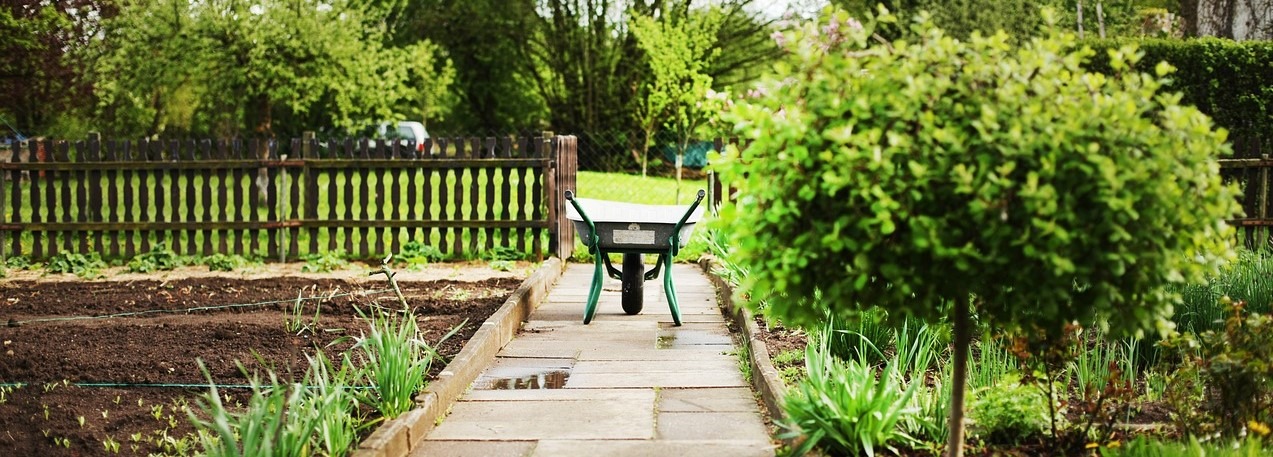The answer to the question of how to provide electricity on an allotment does not have to be complicated or a headache. On a recreational plot – regardless of whether it is a alottment, a summer house or a cottage far away in the mountains – a photovoltaic off-grid installation is ideal. We suggest which photovoltaics for an allotment to choose, how photovoltaics on an allotment will work and which photovoltaic kit for an allotment will be most suitable.
Photovoltaics on an allotment – the best solution for years to come
Anyone who has experienced the pleasure of living on an allotment has seen for themselves just how much fun it can be. A small house away from the hustle and bustle of the city, equipped with everything you need to spend your free time. Greenery, birdsong, a piece of the garden where you can take your mind off your worries by digging in the soil or just carelessly exposing your face to the sun. The only concern with an allotment without electricity may be how and from where to get it, e.g. when dusk falls or when you want to use the fridge or microwave, for example. The thought of generators or the costly efforts to connect to the power grid can now be put to rest. The sun’s rays come to the rescue. They not only wrap our faces in sunlight, but also provide us with sufficient electricity.
Which photovoltaics for a plot without electricity
When and how does photovoltaics work? Simply put – it draws energy from the sun. For best results, you just need to mount the panels in a place with the best sunlight. This could be the roof of a bungalow, the canopy of a terrace or a gazebo. When our house or plot does not have connections or we only use it seasonally, an off-grid installation, which does not require a connection to the general power grid, is the optimal solution. A house equipped with an off-grid system produces its own electricity from solar energy and stores it to use the energy when it is needed. The off-grid installation, in addition to the solar panels, consists of an inverter, which converts the energy into direct current, and an energy storage facility, which allows the energy to be stored and used at any time. This could be, for example, the PowerNest from Green Cell, which is compatible with inverters from many other brands. An off-grid installation is completely self-sufficient and does not need to be connected to the grid, and such a set-up is able to provide a constant supply of electricity. Even when the panels are no longer producing energy (e.g. at night) or when we need more energy, the energy storage then supports the ongoing production from the panels with power.
Does photovoltaics on a recreational plot pay off
An off-grid installation on a plot of land is definitely a benefit in itself. First of all, it provides access to electricity without having to arm the land or enter into power contracts with suppliers. This means complete independence from any electricity companies. It also means that you can manage the energy you produce yourself – harvest it on sunny days, store it yourself and use it whenever you want. This, in turn, means a complete absence of electricity bills. How efficient is an off-grid installation? A lot depends on the number of solar panels used to install it and how much energy can be stored in energy storage. PowerNest, for example, provides 5 kWh of capacity and 5 kW of power, and this guarantees, for example, 3 and 1/2 days of operation for a fridge drawing 1400 W per day, or more than 82 hours of operation for a 60 W TV (which is the amount it takes to watch all eight parts of ‘Harry Potter’ four times over and over again without interruption). The power of the installation can also provide enough energy to power construction and garden tools, as well as heat water in an electric boiler. Given that the sun provides another dose of energy the next day and the day after that, an off-grid installation on the plot ensures that the equipment in the summerhouse runs continuously.
Photovoltaics not only on the allotment plot
Off-grid installations are also ideal for use outside allotments and summer houses, for example whenever there are frequent power cuts. In addition, they are a great solution for supporting the household budget by reducing electricity costs. Just a few photovoltaic panels can draw electricity on sunny days. The surplus, stored for later, and with it power more energy-intensive appliances like the washing machine, dryer or dishwasher. In this way, for whatever reason or rationale, you can make yourself independent of distributors, unpredictable interruptions and supply disruptions. Is it possible to do the off-grid installation yourself? This task should be left to an electrician. Green Cell, on the other hand, offers a very easy-to-install kit for self-installation, consisting of a solar inverter and energy storage, which will last for many years and is even covered (as in the case of PowerNest) by a 10-year warranty. For other equipment, it is better to seek help from the relevant companies involved in photovoltaics.
Related posts
Most viewed entries
- Polish Inventors Who Changed the World – Do You Know Them All?
- The Scariest Myths About Electronic Devices – Halloween 2024
- The history of bicycle – International Bicycle Day
- Electricity in a camper van on holiday – a conundrum easily solve
- Off-grid installation on a plot. Is it worth it?
- Charging your electric car at home without a wallbox

